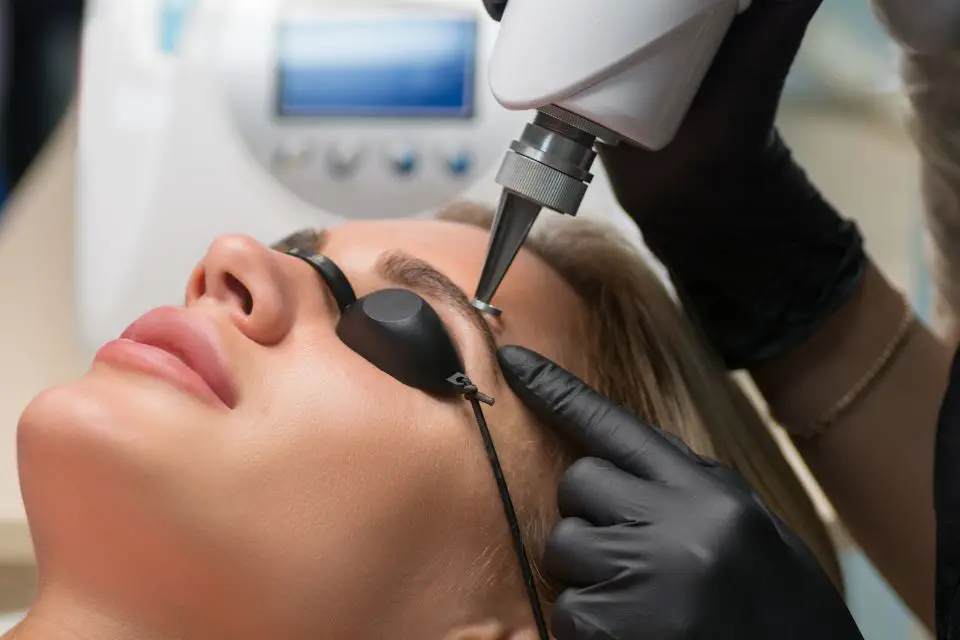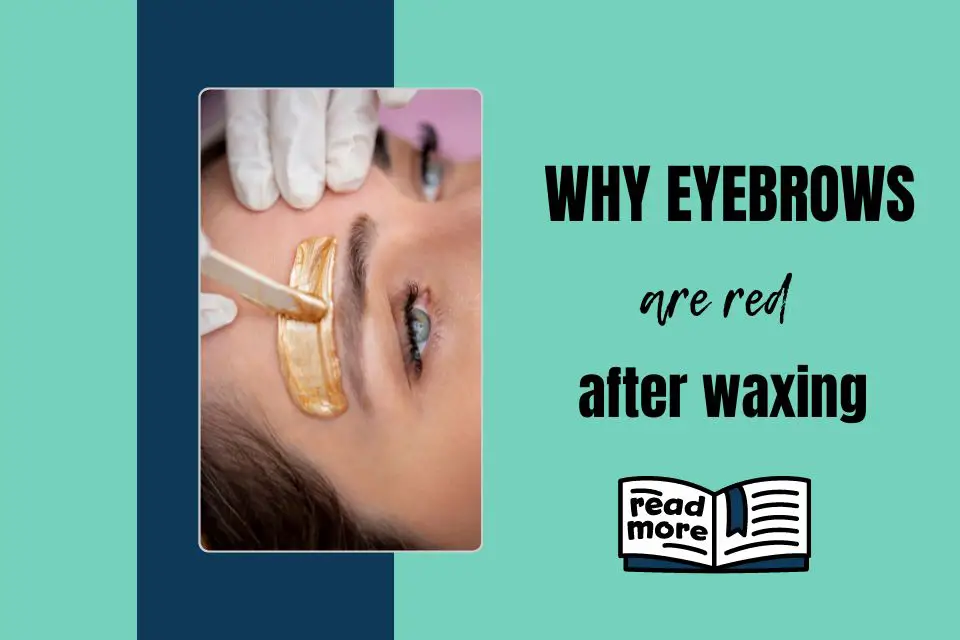Are you tired of that tattoo that you thought was a good idea at the time, but now regret? Or perhaps you have a tattoo that holds negative memories or associations for you. Saline tattoo removal may be a solution worth considering. In this blog post, we’ll cover the benefits, risks, and precautions of saline tattoo removal so you can make an informed decision about whether it’s the right choice for you.
What is saline tattoo removal?
Saline tattoo removal is a method of removing tattoos using a solution of sterile saltwater (saline). The saline solution is injected into the tattooed area using a small needle, and it works to gradually break down the ink particles in the tattoo. The process can be somewhat painful, but it is generally less painful than other tattoo removal methods such as laser removal.
It is also considered to be a safer alternative to laser removal, as it does not rely on the use of heat or intense light to break down the ink. Saline tattoo removal typically requires multiple treatments in order to fully remove the tattoo, and the number of treatments needed can vary depending on the size and location of the tattoo, as well as the type and amount of ink used.
Why choose saline tattoo removal?
Saline tattoo removal is the safest and most effective way to eliminate unwanted tattoos. It’s a minimally invasive procedure that can be performed in a doctor’s office, using sterile saline solution to dissolve the tattoo pigments from underneath the skin. Not only is saline tattoo removal a safe and effective treatment, but it also offers several benefits over other methods.
One of the most significant advantages to opting for saline tattoo removal, as opposed to laser or other forms of treatment, is that there are no long-term side effects. Unlike laser treatments, which can cause scarring and tissue damage, saline injections only penetrate the top layer of skin and don’t leave any lasting marks or complications.
How saline tattoo removal works
Saline tattoo removal works by injecting a saline solution into the tattooed area of the skin, which helps to break down the ink particles and allows the body’s immune system to gradually remove the tattoo over time.
1- The saline tattoo removal process
Tattoos are becoming increasingly popular, but their permanence of them can be daunting. Saline tattoo removal is a safe and effective solution for those who want to say goodbye to their tattoos without any lasting damage. This article explores the saline tattoo removal process and will provide readers with everything they need to know about it. The first step in saline tattoo removal is an examination by a qualified medical practitioner.
During this assessment, your skin type will be assessed and discussed with you before administering the treatment. The next step involves injecting a specialized salt solution into your skin’s area containing the tattoo ink. This helps to break down the ink particles so that they are small enough for your immune system to remove them from your body naturally over time.
2- Factors that affect the effectiveness of saline tattoo removal
Saline tattoo removal is a safe and effective way to remove unwanted tattoos. It involves injecting saline solution into the tattooed area, which causes it to fade over time. However, several factors can affect the effectiveness of saline tattoo removal. The type of ink used in the original tattoo is an essential factor when considering saline tattoo removal.
Different types of ink react differently to saline solutions and may require multiple treatments before any significant fading occurs. Additionally, the ink’s depth at which it was injected into the skin can also affect how quickly it fades with a saline solution. Tattoos done by experienced artists who injected their work deeply may take longer to disappear compared to those done by less professional artists who injected shallowly into the skin
Credit: How To: Saline Tattoo Microblading Removal
Benefits of saline tattoo removal
There are several benefits to using saline tattoo removal as a method for removing tattoos:
1- Non-invasive and painless
Saline tattoo removal is an increasingly popular non-invasive, and painless option for removing unwanted tattoos.
The process involves:
- Injecting a saline solution into the skin.
- Breaking down.
- Carrying away the ink particles.
Unlike laser tattoo removal, saline tattoo removal can be used on all skin types without causing any lasting damage to the surrounding tissue. This tattoo removal method has recently gained traction due to its effectiveness and minimal risks. Many people have found it a safe alternative to more invasive procedures such as laser treatments or surgical excision.
It also works quickly; many patients report seeing results within just one or two sessions, with no downtime or significant discomfort involved. While no treatment can guarantee the complete removal of a tattoo, this method offers an effective way to lighten and fade ink for those looking for a less painful approach than traditional methods offer.
2- No scarring or pigment changes
This tattoo removal method utilizes saline solution injected into the skin, breaking up the pigment particles to lighten or remove the tattoo. The best part about this procedure is that it does not cause scarring or skin pigmentation changes. The process of saline tattoo removal begins with numbing cream applied to the area before tiny injections are made into the top layer of the skin.
The saltwater solution gradually breaks down the ink particles over time, allowing them to fade away slowly. There may be some discomfort associated with the injections, but the recovery time tends to be relatively short due to their low-risk nature.
3- Quick recovery time
Saline tattoo removal is an increasingly popular method of removing a tattoo without damaging the surrounding skin. It’s quick and easy, with minimal risk of scarring or further irritation to the affected area. The recovery time for this procedure is short, making it an excellent option for those looking to get rid of their unwanted ink quickly and efficiently.
This minimally invasive procedure involves injecting a saline solution directly into the tattooed area, where it works to break down the pigment. It’s been found that this solution does not negatively affect any other underlying tissues or organs as some lasers can. This makes it an ideal choice for individuals who may be sensitive to traditional laser treatments or have certain medical conditions that prevent them from undergoing laser removal procedures.

Risks and Precautions of saline tattoo removal
There are a few risks and precautions to be aware of when considering saline tattoo removal:
1- Possible allergic reactions
When it comes to tattoo removal, saline solutions are a popular choice. But before taking the plunge, it’s essential to understand the potential risks of saline tattoo removal, including possible allergic reactions. Meeting an allergen is always a risk when undergoing any medical procedure, and saline tattoos are no exception.
Depending on the type of solution used in the treatment, it may contain allergens such as latex or other preservatives that can irritate your skin. If you have specific allergies or sensitivities to certain substances, consult your dermatologist before getting a saline tattoo removal procedure. In addition to possible allergic reactions from allergens in the solution, there may also be an adverse reaction from removing the tattoo itself.
2- Precautions to take during the healing process
People getting saline tattoo removal might think that once the healing process starts, they have nothing more to do. However, people should take a few precautions to ensure quick and effective results during the healing process. Most importantly, it is essential to always keep the treated area clean and dry.
Wash your hands before touching the area with warm soapy water. After cleaning the area with an antiseptic solution or soap, gently pat it dry. Additionally, do not apply creams or lotions on the treated area, as they can impede healing and cause irritation. It is also essential to stay out of direct sunlight for a few days after treatment, as UV rays can slow down or even reverse the results achieved through saline tattoo removal.
Alternatives to saline tattoo removal
There are several alternatives to saline tattoo removal that may be used to remove tattoos, including:
1- Laser tattoo removal
Laser tattoo removal is becoming increasingly popular for people who want to get rid of unwanted tattoos. It involves using a laser beam to break up the pigment in the skin, resulting in gradual fading and eventual elimination of the tattooed area. Laser tattoo removal eliminates the need for harsh chemicals or abrasive treatments that may be required with other methods, making it a safer and more efficient solution for many individuals.
The process begins with a consultation with a qualified dermatologist or plastic surgeon who can evaluate each case and determine whether laser tattoo removal is suitable. The doctor will use an absorption spectrometer to measure the ink present to create a tailored treatment plan that meets each person’s needs. During treatment, light pulses are directed at the treated area, which breaks up pigment particles and encourages natural fading over time.
2- Surgical tattoo removal
Surgical tattoo removal is a more invasive option for those looking to erase their body art. It is the most reliable and effective way of removing tattoos, although it may require several treatments. Compared with saline tattoo removal, surgical treatment requires general or local anesthesia before the procedure begins. The process involves cutting into the skin and surgically removing the pigment from beneath its surface.
The surgeon must be skilled in suturing and revision surgery, as there’s a risk of scarring at the extraction site. In addition to being expensive, this method also carries certain risks, such as infection, scarring, pain, and numbness in some cases. However, when performed by an experienced professional with modern equipment and techniques, surgical tattoo removal can produce excellent results without causing long-term damage or complications.
Cost of saline tattoo removal
The cost of saline tattoo removal can vary widely depending on a number of factors, including the size and location of the tattoo, the number of treatments required, and the practitioner performing the procedure.
In general, saline tattoo removal tends to be less expensive than other methods of tattoo removal, such as laser removal. According to the American Society of Dermatologic Surgery, the average cost of a single laser tattoo removal treatment is $463, while the average cost of a single saline tattoo removal treatment is $100. However, as with any medical procedure, it is important to keep in mind that costs can vary significantly and it is best to consult with a practitioner for an accurate cost estimate.
It is also worth noting that saline tattoo removal may require multiple treatments in order to fully remove the tattoo, so the total cost will depend on the number of treatments needed. It is important to discuss the expected number of treatments and the total cost with your practitioner before starting treatment.
1- Factors that affect the cost of saline tattoo removal
There are several factors that can affect the cost of saline tattoo removal, including:
- Size and location of the tattoo: Larger tattoos and tattoos located in difficult-to-treat areas, such as the face or hands, may require more treatments and may be more expensive to remove.
- A number of treatments needed: Saline tattoo removal may require multiple treatments in order to fully remove the tattoo. The total cost will depend on the number of treatments needed.
- The practitioner performing the procedure: The cost of saline tattoo removal can vary depending on the practitioner performing the procedure. Dermatologists and plastic surgeons may charge more for the procedure than other medical professionals.
- Location of the treatment: The cost of saline tattoo removal may vary depending on the location of the treatment. Prices may be higher in larger cities or in areas with a higher cost of living.
Comparison to other tattoo removal methods
There are various methods available when it comes to removing unwanted tattoos. Saline tattoo removal is one of the newer methods that has become increasingly popular in recent years. It offers several advantages over traditional laser tattoo removal, including fewer pain and risks. This article will discuss everything you need to know about saline tattoo removal and compare it to other tattoo removal methods. Saline tattoo removal involves injecting a saline solution directly into the ink particles of the unwanted tattoo.
This causes the pigment to be broken down and eventually fade away with time. Unlike laser treatments, which can also cause scarring or changes in pigmentation, saline injection is much gentler on the skin since it does not damage healthy cells around the treated area.

Related Reading: Reasons why my eyeliner tattoo went wrong
Conclusion
In conclusion, saline tattoo removal is a non-invasive and painless method of removing tattoos using saline solution. It has several benefits, including quick recovery and minimal scarring or pigment change risk. However, it is not suitable for all skin types and may not be effective in removing all tattoo colors.
Additionally, it may require multiple sessions for complete removal. While the cost of saline tattoo removal may be lower than other methods, such as laser tattoo removal, it is essential to consider all factors and weigh the pros and cons before deciding if it is the proper one. It is always recommended to consult with a qualified medical professional before undergoing any tattoo removal treatment.
Frequently Asked Questions

Fashion Panda is pleased to introduce Luisito Samra, the skin care blog writer specializing in hair, eyebrows, lashes, and nails. With a passion for all things beauty, Luisito is dedicated to helping his readers achieve their best possible appearance through the latest and greatest in hair, eyebrow, lash, and nail care.
As a writer for Fashion Panda, Luisito brings his in-depth knowledge and expertise to the table. From the latest hair care products to tips for maintaining healthy, strong nails, he covers it all. With a focus on providing reliable, up-to-date information that is backed by scientific research and expert opinions, Fashion Panda readers can trust that they are getting the best possible advice. Luisito also understands that everyone’s skin, hair, and nails are different, and works to offer a range of solutions and recommendations to suit every need.



